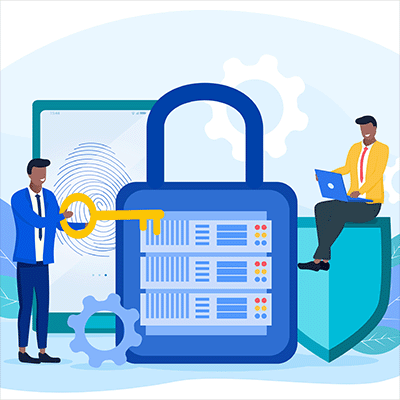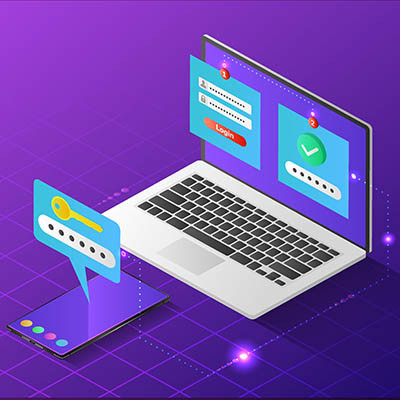Data backup is one of the most important parts of protecting your digital assets, but many organizations are unable to successfully pull it off without a hitch. We’ll help you get a feel for what should happen when you set up your data backup system, what happens when you initiate a backup, and how to proceed with restoring it.
Computerware Blog
With the massive shift toward remote and hybrid work, many companies have implemented virtual private networks to facilitate a more secure working environment for their employees. However, as is the case with these shifts, cybersecurity threats also respond in kind. How are hackers attempting to exploit virtual private networks, and what can you do about it?
IT is far from the most simple aspect of your business, but it only becomes a problem when you let it become one. If you can get a couple of things just right, then your work will be made much more manageable and far less stressful. Let’s discuss three of the most important parts of your internal IT infrastructure and what you need to know during the implementation process.
This year saw a considerable rise in the number of high-profile ransomware attacks, so if you have not already considered what you are going to do to put a stop to them for your own business, you need to do so now. Thankfully, there appear to be several measures you can implement to limit the damages done by ransomware, and it all starts with some preparation.
Sometimes, no matter how hard you try, technology just doesn’t want to cooperate. This frustration often leads users to contact the help desk, which is fine, but sometimes there are small things you can do to resolve issues that you might not have thought about doing. These simple steps might save you a bit of time and help to resolve your issues faster and more efficiently.
It’s a well-known fact that successful businesses and influencers in any chosen industry utilize social media to an extent, whether it’s Facebook, Twitter, LinkedIn, Tik Tok, Instagram, or otherwise. All that said, however, in this connected world, one has to be aware of how this connection can influence cybersecurity. What are some ways you can keep yourself safe while using social media for either your business or your personal brand?
When the COVID-19 pandemic started to surge across the world, much of the workforce shifted to remote operations, but it has become clear over the past several months that this shift is likely temporary, forcing many employers to consider the hardest question of all: what will it take to get people back in the office? A report from Gartner suggests that it’s not as easy as it sounds, and in fact might be moving in the opposite direction to what employers are hoping.
Unfortunately, the COVID-19 pandemic is still in full swing, and while many companies buckled under the pressure put on them to maintain operations, others have managed to adapt through the use of remote technology solutions. Businesses have put into place policies surrounding this remote technology, many of which are both helpful and harmful.
When you run a business, solid decision making is crucial to achieving success. This goes from hiring and managing your staff, dealing with your prospects and customers, and procuring tools and resources that make your business possible. Today, technology is not only important, it is a major consideration when hashing out your yearly (or quarterly) budget. Let’s go through a couple of tips on how to make the best technology decisions for your company.
We talk a lot about how the cloud is growing in utilization, and considering the circumstances of the past 18 or so months, it’s not surprising. However, what might be surprising to you is that this movement to the cloud is not necessarily to the detriment of the on-site data center. In fact, there are several reasons why businesses still consider in-house data centers to be the ideal solution. But why is this?
Data backup is one part of running a business that nobody wants to think about, but it’s something that must be considered should anything ever happen to your company’s data. In a world where disasters are so unpredictable and devastating, you can never know when one will strike, so you must take preventative measures now so that you are not caught unawares. Let’s go over one of the best ways you can get ready for these disasters: cloud-based automatic data backups.
It’s no secret that passwords have long held center stage when it comes to data security, but if we’re to be honest, a password just isn’t sufficient to protect your business. Don’t get us wrong: passwords remain immensely important, but their role has diminished with the availability of other, more advanced security features. One of these features is something called multi-factor authentication.
When it comes to getting the technology support you need to keep your business running, nothing beats a great help desk solution. Unfortunately, not all help desks have the same quality that you would expect from experts in the field. To help you make the best decisions about your business’ technology support needs, we have outlined four key traits that you should look for in any help desk employee/solution.
We get more email correspondence than ever. Unfortunately, many of these messages are spam. Some are even worse: Phishing attempts looking to fool you into providing information that can be used to infiltrate your business account or network. This month, we thought we would go over some of the telltale signs that you are dealing with a probable phishing attempt and how to properly manage the loads of spam you get in your inbox each day.
Today’s business takes in more data than ever before. The sales process is built on understanding target companies, and even the businesses that already purchase goods and services of your company are constantly providing more information to help you improve your relationships. Unfortunately, not a lot of businesses utilize this data to its full potential. Let’s take a look at a few ways a business can utilize data to improve their position in the sales process.
We often talk about how some businesses do not have the budget to hire technicians to perform regular maintenance on their IT infrastructures, but what about the one behind the scenes calling all the shots? If companies cannot hire technicians, then it stands to reason that they also cannot afford someone at the executive level who manages their workload. The concept of the virtual chief information officer, or virtual CIO, challenges this notion by providing access to technology leadership for small businesses.
Disasters are not something relegated to specific locations or industries. All organizations are susceptible to a data loss disaster or two, no matter which category they fall under. As a business owner, it should be your prerogative to protect your company from the various disasters that could create downtime, destroy data, and disrupt operations.
When many businesses look to add to their teams, they typically have a series of qualifications they need each applicant to meet before they grant interviews. They make their selection, do their entrance training, and then expect that the new hire will settle in and be as productive as possible as soon as possible.
In today’s business environment, where ransomware strikes just as often as just about any other threat out there, you need to take as many precautions as possible so that your organization does not become another victim or statistic. All it takes is looking at reports from various security firms to understand just how important even the most basic of security measures—the password—is toward keeping businesses safe.




















